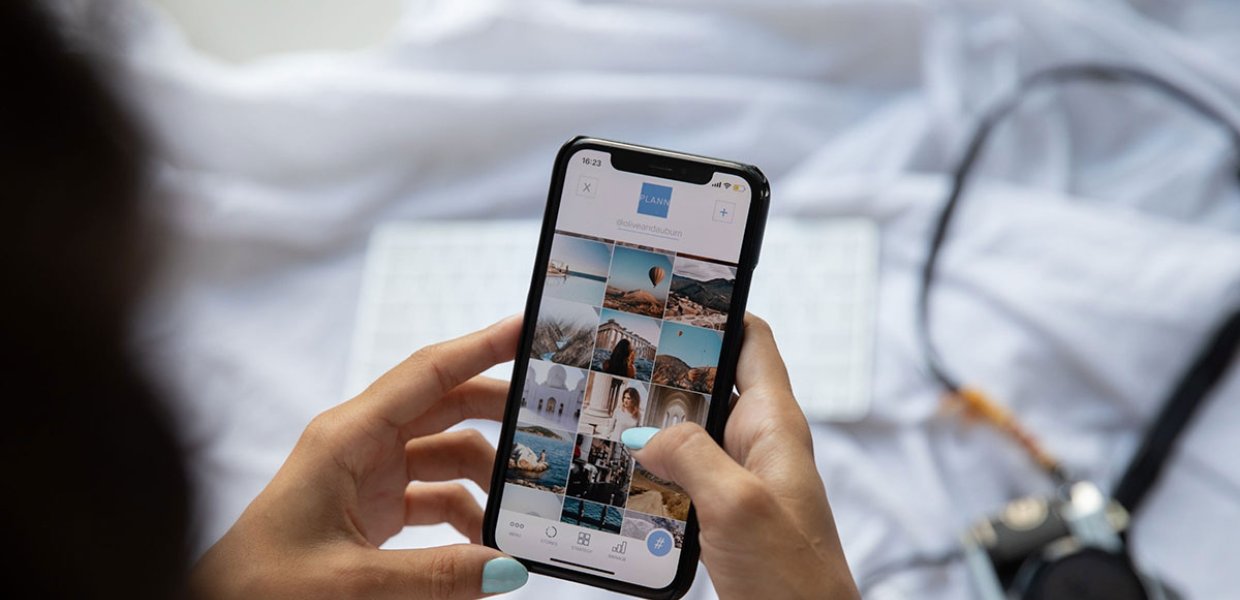It’s 1:45 a.m. on March 22, 2021, and YouTuber David Dobrik sits alone on the floor of his mansion to film his first apology video for his role in the 2018 rape and sexual misconduct allegations against his Vlog Squad member “Durte Dom.” A week earlier, the allegations emerged and Dobrik promptly lost 13 lucrative brand deals from companies such as HelloFresh, Dollar Shave Club and EA, each known for their frequent partnerships with content creators. The fallout would continue as the YouTube star lost 300,000 followers, was forced to step down from his photography startup, Dispo, and cut ties with LA’s Angel City Football Club, of which he was co-owner.
The journalist who broke this story and brought the victims’ experiences to the forefront was Kat Tenbarge. As a senior reporter at Insider tasked with holding influencers accountable, Tenbarge had already broken some of the biggest influencer-related scandals of the previous year: sexual assault (and subsequent accuser pay-off) allegations against makeup mogul Jeffree Star and allegations from beauty YouTuber James Charles’ ex-employee of wrongful termination and non-payment. These, among countless other stories, earned her the title and reputation of the Influencer Watchdog.
Her journalistic career began in politics. But after having been selected as a 2018 White House Correspondents’ Association Scholar, she became disillusioned by this path and began to wonder how she could combine her personal passion for YouTube with her fascination of burgeoning influencer culture into an innovative beat. When she joined Insider out of college, they were open to the idea that an audience existed at the intersection of creator culture, fan culture and accountability. Taking inspiration from traditional political watchdog journalism, she brings investigative techniques to this new economy in a way that has a never been done before.
In 2019, 38% of U.S. CEOs said that influencers would be the most valuable communication strategy for their companies in the future, according to USC’s Global Communication Report. According to Advertising Perceptions, influencer content comprised 20% of U.S. agency and marketing professionals’ digital ad budgets in 2021. And Business Insider Intelligence estimates that influencer marketing will hit $15 billion in 2022 — almost doubling in just three years. Despite these huge financial commitments, there is still a lack of regulation and understanding on both the platforms and the PR teams, making Tenbarge’s role so essential.
In 2022, as the reverberations of the pandemic accelerate shifts in the digital media landscape, the necessity for independent accountability will only increase. “Relationships between creators and platforms are historically really important for whether an app thrives or fails,” Tenbarge notes. Platforms like YouTube prefer to maintain a wide berth between the company and its userbase. But from a PR standpoint—for platforms, influencers and brands—this is leading to an inundation of stories of exploitation and abuse. Through purposeful distancing, platforms have little regulation and provide no HR, child protection or institutional support for the influencers on their networks.
As a result, Tenbarge suggests that while the influencer industry itself is maturing, some of the people brands are aligning with are not maturing — acting out under the weight and demands of their strange, new untested influencer existence. This won’t just be a concern for tech companies’ PR, but for anyone managing influencers, conducting influencer marketing, or placing ads on these platforms.
And what about the teams frantically trying to respond each time a scandal breaks? Tenbarge has only one question: Why weren’t they prepared? Influencers, unlike traditional celebrities, live in the open. Sharing every detail of their lives is a core element of their appeal. It was not a surprise to an expert like Tenbarge — so embedded in YouTube culture and history — that a David Dobrik, and thus, a Vlog Squad scandal emerged. From their previous content, the clues were there. Yet influencers like Dobrik, Charles, and others are consistently criticized for their subpar responses and apologies.
It appears that influencers’ teams put blind trust in the content — the audience is watching it and that’s enough. In a click-driven culture, that may indeed seem like a good strategy on the surface. But, in 2022, accountability and authenticity will be key. Unless you want to wake up to find you and your client facing a crisis unprepared — and quite possibly a Kat Tenbarge investigation trending on Twitter — heed her advice: Prioritize performing content analysis on your influencer clients’ videos and outputs.
In 2022, influencers and creators will continue to dominate digital media growth. With platforms unlikely to implement any meaningful regulation, it will fall to journalists in the digital culture space — and The Influencer Watchdog who originated the beat — to maintain accountability in an industry ripe for abuse.









